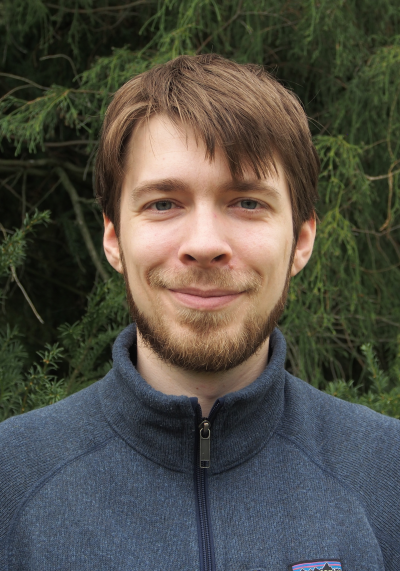- Graduate School GLOMAR
- PhD student members
- Adrian Hoefken
Adrian Hoefken
| Institution: | University of Bremen |
| Office: | GEO 1, GEO 4120 |
| Phone: | +49 421 218-65311 |
| E-mail: | ahoefken@marum.de |
| Other webpage(s): | Adrian's MARUM web page |

PhD Project
Magnetic Mineral Alteration by Diffusive and Advective Fluxes in Ridge Flank Sediments
The project focuses on magnetic mineral alteration induced by diffusive and advective oxygen and cation fluxes in ridge flank sediments and the resultant geochemical processes. A special target of this investigation are thin sediment covers on relatively young, porous basaltic crust with active hydrothermal circulation. Most if not all bottom sediments in the deep ocean underwent such conditions during the early stages of sedimentation on young oceanic crust. The geochemical processes that can be explored in ridge flank sediments therefore offer unique insights into the marine sediment-rock interface itself and is of global relevance.
In such settings the sediment undergoes a double change of redox conditions from deposition under oxic conditions to successively reducing conditions during burial back to oxic condition by upward diffusion from the sediment-rock interface. Past changes in the bottom water oxygenation should have propagated via the hydrothermal fluids and left an impact on the sediments in the form of (glacial-interglacial) redox cycling.
These cyclic redox changes lead to repeated alteration of redox-sensitive iron minerals of which many can be identified by their characteristic magnetic properties. The “inverse redox zonation” allows us to study the kinetics of alteration processes without the permanent upward migration of the redox zones due to ongoing sedimentation. Therefore a complete diagenetic cycle of iron-oxide minerals may be investigated over a timespan of millions of years and for a wide range of mineral compositions.
To explicitly investigate the affected redox sensitive iron minerals, different rock and sediment magnetic methods and instruments are used. These methods comprise frequency dependent susceptibility measurements, measurements with a cryogenic magnetometer such as natural remanent magnetization (NRM), anhysteretic remanent magnetization (ARM), isothermal remanent magnetization (IRM), hysteresis and first order reversal curve measurements (FORC) and thermomagnetic measurements. The study will be substituted by systematic electron microscopic analysis of magnetic mineral extracts as well as laboratory dissolution experiments and geochemical modelling.
Thesis Committee
| Prof. Dr. Tilo von Dobeneck | University of Bremen |
| Prof. Dr. Wolfgang Bach | University of Bremen |
| Prof. Dr. Sabine Kasten | Alfred Wegener Institute, Helmholtz Centre for Polar and Marine Research (AWI), Bremerhaven |
| Prof. Dr. Andreas Lüttge | University of Bremen |


